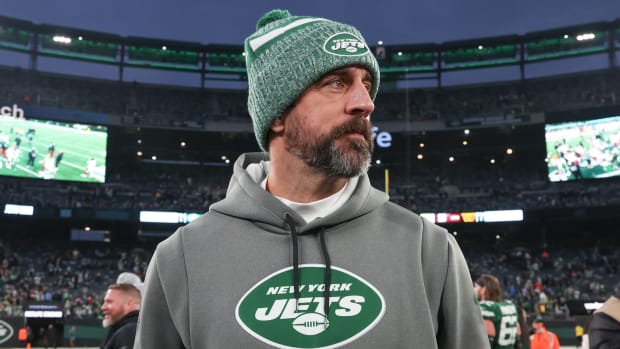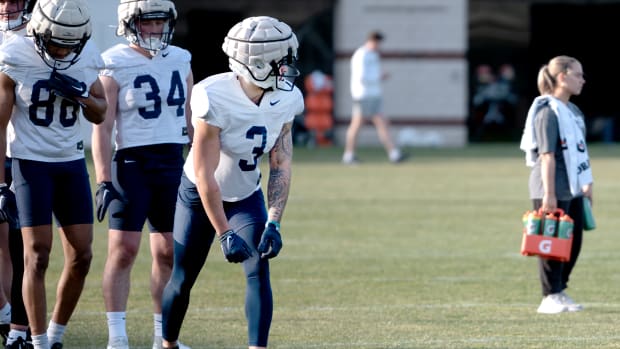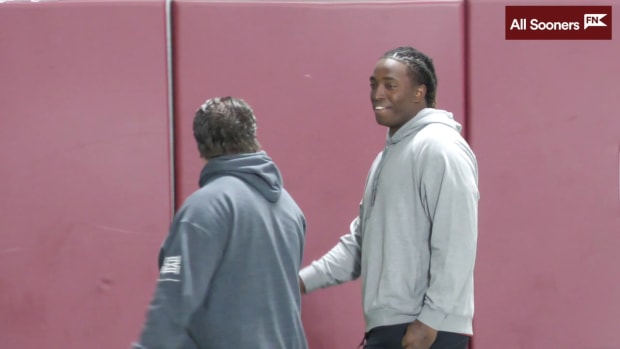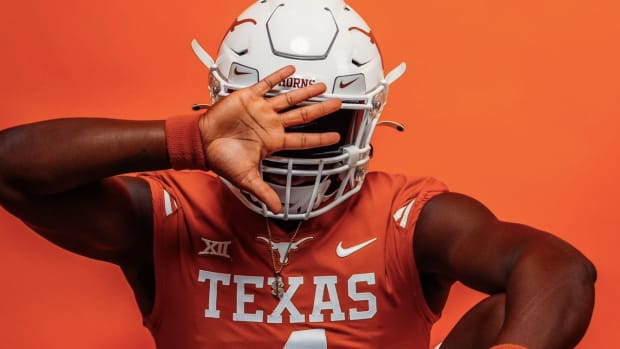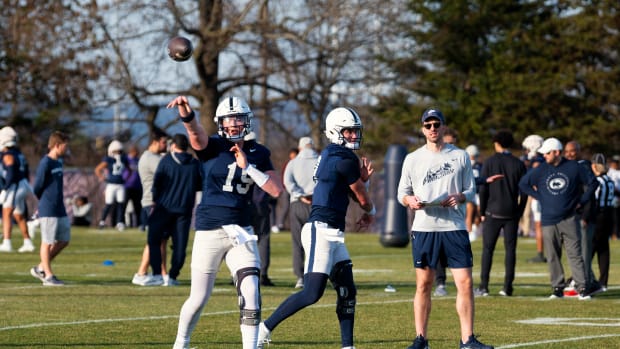How One College Football Team Is Staying in Shape While Staying Home
Backpacks stuffed with books. Duffle bags filled with sand. Water jugs. This is what at-home workout equipment looks like during a pandemic. With gyms, among so many other things, shut down around the globe as the coronavirus continues to spread, people are turning their living rooms, kitchens and even bathrooms into pseudo fitness studios.
This includes Division I athletes, who must figure out another way to keep up their strength and conditioning with many college campuses closed. The NCAA recently canceled all winter and spring championships for 2020 and some conferences have canceled all athletic related activities through the end of the 2019-20 academic year. So how do student-athletes stay in shape without access to their school’s multimillion-dollar facilities and state-of-the-art technology and equipment?
“Instead of a dumbbell squat, we’re giving them direction on how to fill a duffle bag with sand or books or anything that they have to give it some weight,” says North Carolina’s head strength coach Brian Hess. “So now we’ll do a goblet squat. It’s the same movement, but now we’re loading it with anything we can put together at home.”
At UNC, Hess and his strength staff are putting together voluntary workout programs for football players to do at home. A gallon of water can become a kettle bell. A coffee table can become a bench. When Hess worked as an assistant strength coach at Harvard from 2009-11, he had to come up with exercises for a Nordic skier who was studying abroad in Patagonia. With the coronavirus outbreak halting team workouts until further notice, he’s falling back on that experience. “This isn’t the first time I’ve had to write a program with no weights involved,” he says.
Hess’s plan is to email players PDFs with personalized workouts, including diagrams and explanations of each movement, each week. Ideally the guys will establish a routine and train at similar times as if they were working together in Chapel Hill. Hess expects this will be easier to manage once players receive their academic schedules and begin online classes next week.
The team will be split into four groups of 25 players—mostly organized by position—reporting to a specific strength coach. Hess, for example, will be in charge of the linemen. Coaches hope this will keep communication smooth, whether it's via email, Zoom or text.
While he’s still in the process of finalizing the program, Hess explained what the first week might look like: Players begin with the same dynamic warmup they’ve done before as a team, then move into a duffle bag goblet rear foot elevated squat, maybe four sets of eight reps each side, then into a bag goblet reverse lunge. Hess notes that single leg work will be a big focus because he’s got to keep movements challenging despite the lack of load. The rest of the workout might include a bag RDL, bag hip bridge and core movements. As far as cardio and conditioning, Hess hopes players can get to a field or a flat road and set up some cones—or something similar—for change-of-direction work.
After three weeks, Hess and his staff will re-evaluate how things are going and make necessary adjustments.
“We will give them as many options as we can to replicate the best training program we can,” Hess says.
Eventually, depending how long it takes to get back on campus, Hess will add position-specific concepts the best he can. It might just be that conditioning will be different for each group, or that some of the explosive work and plyometrics would change slightly if you’re a skill player or a lineman.
“Once we get to the time of year where that becomes our focus, we’ll have a new program ready for the guys from an at-home standpoint,” Hess says.
North Carolina went 7–6 under Mack Brown last season but has the tools to be an ACC Coastal contender. The Tar Heels had the nation’s No. 19 recruiting class for 2020 and currently have the No. 4 class for 2021. Four-star quarterback Drake Maye, a top-10 quarterback in his class, recently flipped his commitment from Alabama to UNC. But in order to legitimately compete with Clemson within the conference and keep up the program’s momentum, players can’t get lax while they’re stuck at home.
“If you’re a lazy player or your eating habits are bad, we’ve challenged parents to help us, but we’ve also challenged players,” Brown says. “Teams that have a lack of discipline or are irresponsible are going to lose ground and lose games this spring, not next fall.”
Hess adds that while he’s not worried the team will get out of shape, he reminds them that “if we have to start at zero when you come back, that will put us further behind. But if we can start back with some conditioning and then hit our summer program as planned, with some modifications made, we’ll be in a much better spot.”
Players still have access to team nutritionist Kelsee Gomes, too, who will regularly communicate with players about how their diet is going. UNC is also working with the NCAA to figure out how to continue helping players who might be mid-rehab and providing guys with certain nutritional items, like supplements, that they’d normally have access to on campus.
“We’re just making sure guys don’t regress after working so hard,” Hess says.
Hess admits he will be interested to see where his players end up when this is all over and life is back to normal. No one has any idea when college football teams will get back to campus. Or when fall camp will start. Or if the season will be impacted. Right now, all the UNC strength staff can do is keep players moving and help them stay in the best shape possible, understanding that a bag goblet squat simply isn’t the same thing as a dynamic effort squat where bar speed is measured by chains and bands. But it will have to do for now.
“It’s making the best out of a bad situation,” Hess says.

